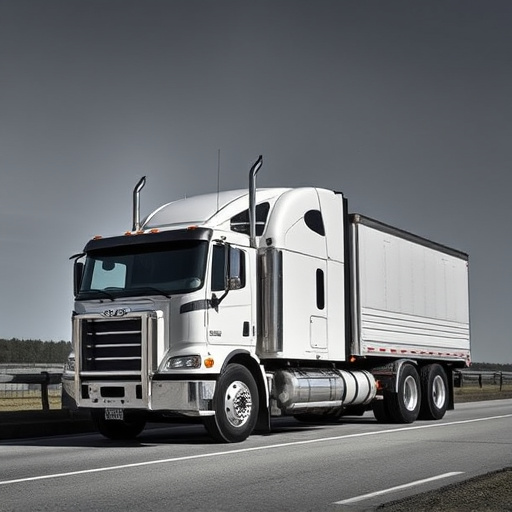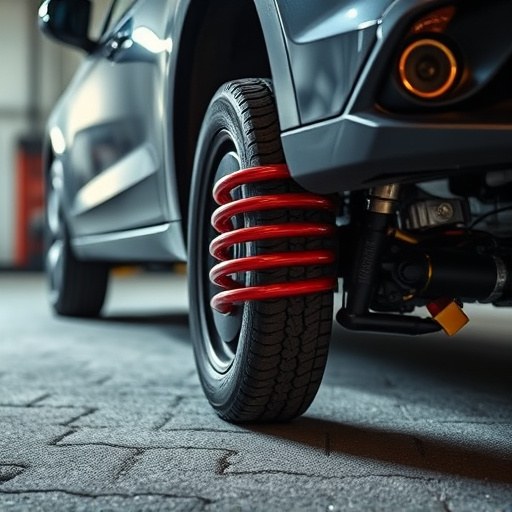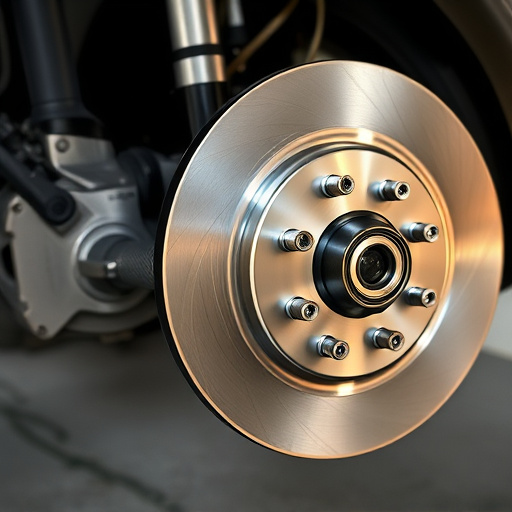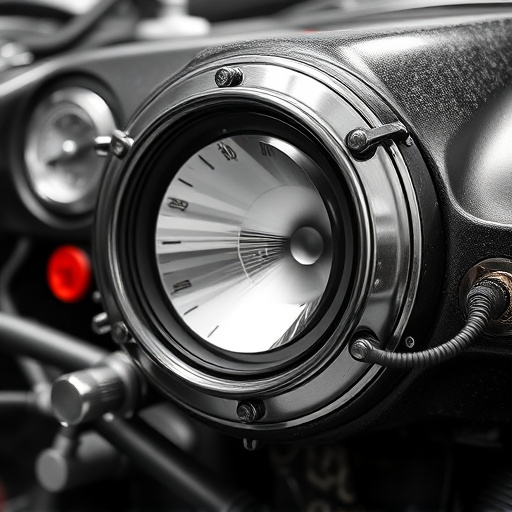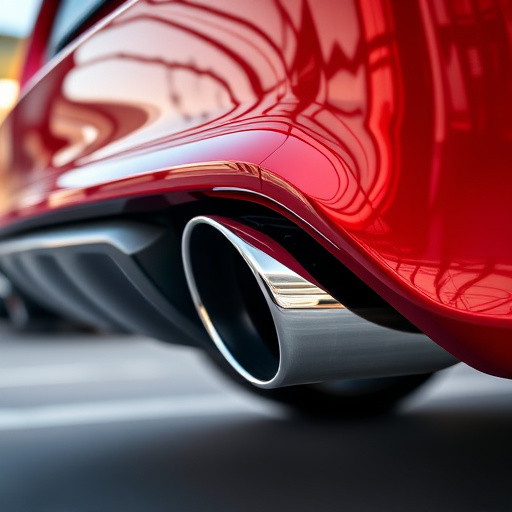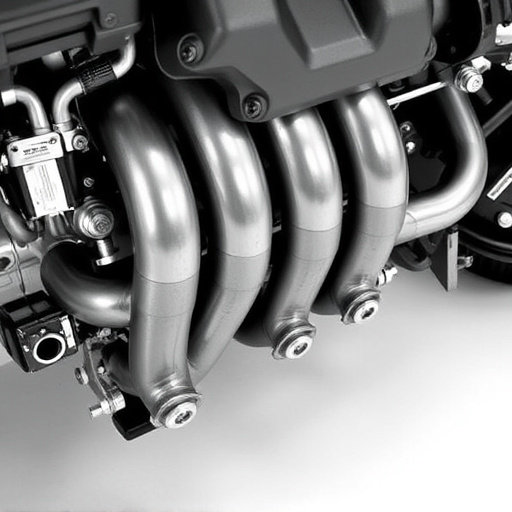Single exhaust systems, designed for simplicity and efficiency, route gases from each cylinder directly to a final muffler. These systems enhance performance by reducing backpressure, simplify tuning, and boost engine output with top-tier modifications while meeting emission standards. Modern engineering incorporates advanced technologies like SCR for reduced pollutants, real-time monitoring sensors, and ECUs for optimal adjustments in diverse driving conditions. Regular maintenance is crucial to ensure efficient operation within regulatory limits.
In today’s stringent environmental landscape, understanding single exhaust systems (SES) is crucial. SES configurations play a pivotal role in vehicle emissions control, aiming for compliance with strict emission standards worldwide. This article delves into the intricacies of SES, exploring how they manage and reduce pollutants. We examine the evolving emission standards that drive technological advancements, ensuring cleaner air. By highlighting advanced technologies like selective catalytic reduction (SCR) and particulate matter filters, we reveal the innovations that empower SES to meet these stringent regulations effectively.
- Understanding Single Exhaust Systems
- Emission Standards and Their Impact
- Advanced Technologies for Compliance
Understanding Single Exhaust Systems
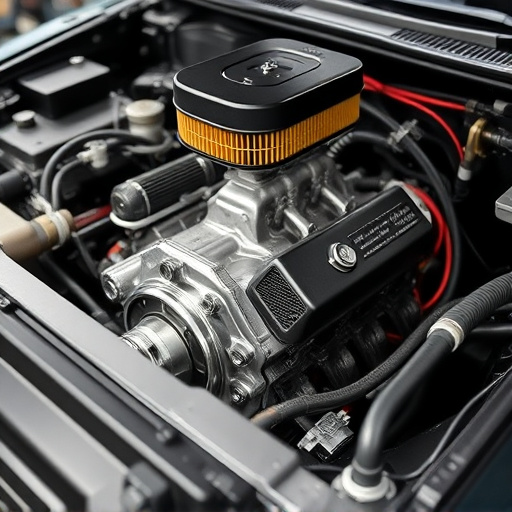
A single exhaust system is a type of engine exhaust setup designed with simplicity and directness in mind. Unlike systems that combine exhaust from multiple cylinders into one pipe, a single exhaust system routes the exhaust gases from each cylinder through its own dedicated path, ultimately converging at a final muffler and tailpipe. This design offers several advantages. For instance, it can enhance engine performance by reducing backpressure, allowing for more efficient gas exchange within the combustion chamber. Additionally, single exhaust systems are easier to tune, as they provide clearer signals to the vehicle’s electronic control units, leading to improved overall performance.
When it comes to high-performance applications, modifying a single exhaust system with top-tier parts can significantly enhance engine output and responsiveness. Upgrades such as high-flow catalytic converters, optimized headers, and advanced mufflers not only improve flow but also reduce noise levels without compromising legality. Moreover, integrating suspension components or kits designed for performance tuning can complement the changes made to the exhaust system, allowing drivers to experience a seamless blend of power, control, and driving pleasure—all while ensuring compliance with relevant emission standards.
Emission Standards and Their Impact
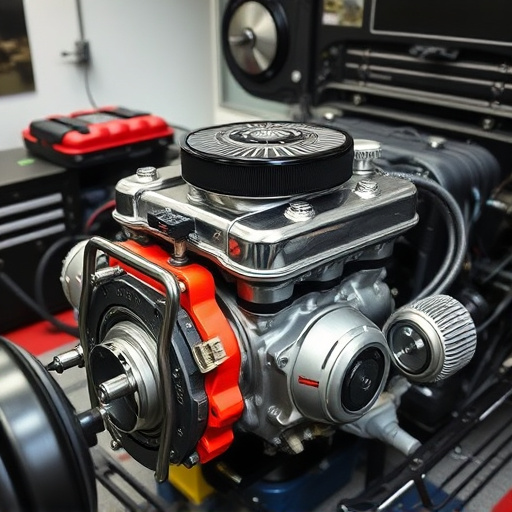
Emission standards have become a critical aspect of modern vehicle regulations, aiming to reduce harmful pollutants and ensure cleaner air. These standards play a pivotal role in shaping the design and performance of single exhaust systems. Manufacturers must adhere to strict guidelines that limit emissions, such as carbon monoxide, nitrogen oxides, and particulate matter, which are often achieved through advanced combustion technologies and sophisticated aftertreatment devices.
Single exhaust systems, with their direct path for exhaust gases, face the challenge of balancing efficiency and emission control. The integration of components like catalytic converters, oxygen sensors, and muffler tips is essential to meet these standards while maintaining optimal engine performance. Additionally, regular maintenance and timely replacement of brake components and suspension kits can contribute to keeping the system in top condition, ensuring it continues to operate efficiently within the set emission limits.
Advanced Technologies for Compliance
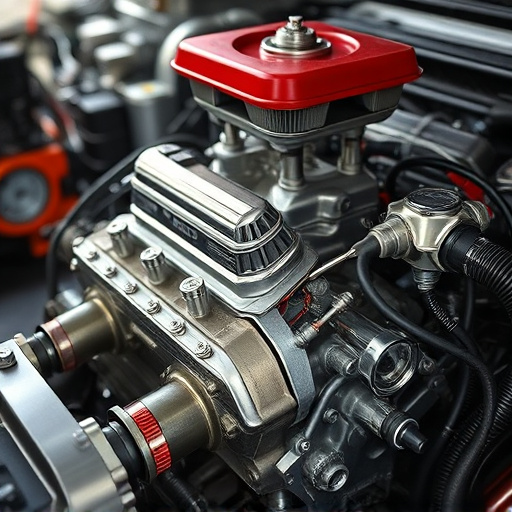
In the realm of single exhaust systems, advanced technologies play a pivotal role in ensuring compliance with stringent emission standards. Modern automotive engineers are leveraging sophisticated mechanisms to reduce harmful pollutants, such as nitrogen oxides and particulate matter, without compromising performance. One notable innovation is the integration of selective catalytic reduction (SCR) technology, which uses urea injection to convert noxious gases into harmless substances within the exhaust stream. This method significantly lowers emissions, making it a game-changer for meeting regulatory requirements.
Additionally, sophisticated sensors and electronic control units (ECUs) monitor various parameters in real-time, allowing precise adjustments to the single exhaust system’s operation. These systems can dynamically alter combustion processes and exhaust gas composition, ensuring optimal performance during different driving conditions. For instance, cat-back exhaust systems equipped with advanced sensors can detect when the vehicle is idling or accelerating and adjust airflow accordingly, thereby enhancing fuel efficiency and reducing emissions of brake components.
Single exhaust systems, while seemingly straightforward, play a crucial role in balancing performance and environmental responsibility. With ever-stricter emission standards, these systems have evolved to meet the challenge through advanced technologies. By understanding their inner workings and the impact of regulatory changes, vehicle manufacturers can ensure that single exhaust systems continue to deliver both power and cleanliness, paving the way for a more sustainable future on our roads.

